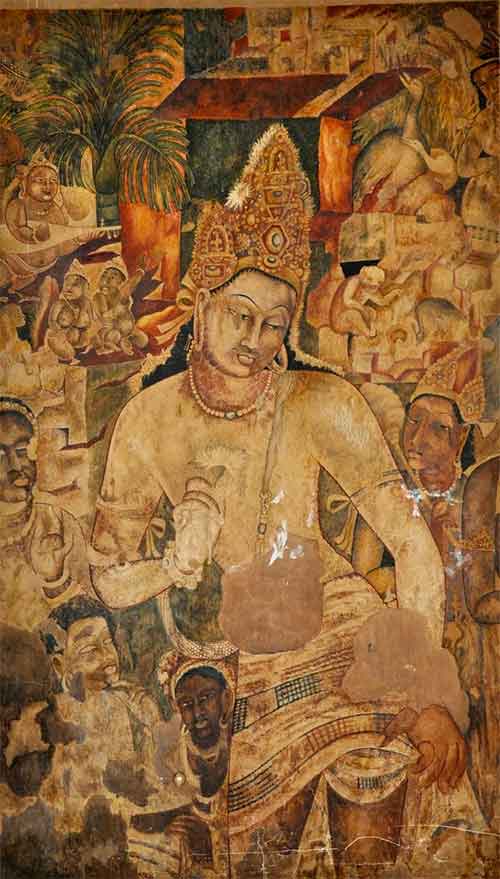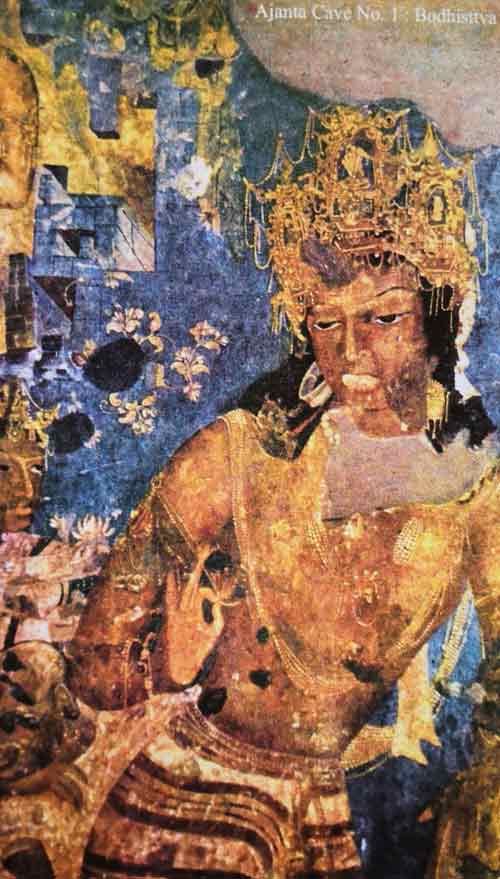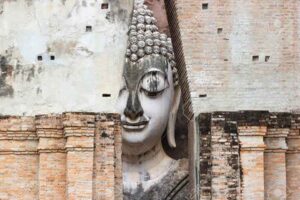The Ajanta Caves, located in Maharashtra, India, are renowned for their beautiful sculptures and paintings that reflect the rich cultural and religious heritage of ancient India. Among the most significant and well-preserved sculptures in the Ajanta Caves are those depicting the Buddhist figures Padmapani and Vajrapani.

Padmapani, also known as Avalokitesvara, is a male figure associated with compassion and kindness. He is often portrayed carrying a lotus flower in one hand and a vase in the other, symbolizing purity and abundance. His image can be found in several of the Ajanta Caves, including Caves 1, 2, 4, 16, 17, 19, and 26.
Vajrapani, also known as Indra, is a male figure associated with power and strength. He is often portrayed holding a vajra, a ritual weapon used in Buddhist ceremonies, in his right hand. His image can be found in several of the Ajanta Caves, including Caves 1, 2, 4, 9, 16, and 26.

The depictions of Padmapani and Vajrapani in the Ajanta Caves are not merely artistic and aesthetic, but also reflect the cultural and religious significance of these figures in Buddhist mythology. The symbolism associated with these figures was an integral part of the artistic and cultural heritage of ancient India.
The image of Padmapani, with his lotus flower and vase, represents the ideal of purity and abundance in Buddhist mythology. It is said that Padmapani’s compassion and kindness are so great that he is willing to delay his own enlightenment to help others achieve it. The lotus flower he carries symbolizes the potential for enlightenment within every being, while the vase symbolizes the limitless abundance of the Buddha’s teachings.
The image of Vajrapani, with his vajra, represents the ideal of power and strength in Buddhist mythology. It is said that Vajrapani protects the Buddha and his teachings with his powerful weapon, the vajra. The vajra also symbolizes the unbreakable nature of the Buddha’s teachings and the strength of the human spirit in overcoming adversity.
The depictions of Padmapani and Vajrapani in the Ajanta Caves are not only significant for their artistic and cultural value but also provide valuable insights into the role of Buddhist mythology in the evolution of Indian art. These figures continue to inspire and captivate visitors to the Ajanta Caves, offering a glimpse into the spiritual and artistic heritage of ancient India.
Conclusion
In conclusion, the depictions of Padmapani and Vajrapani in the Ajanta Caves are among the most significant and well-preserved sculptures in the complex. These figures represent the ideals of compassion, kindness, power, and strength in Buddhist mythology and provide insight into the spiritual and cultural heritage of ancient India. Visitors to the Ajanta Caves should not miss the opportunity to see these beautiful sculptures and gain a deeper understanding of the evolution of Indian art and culture.


